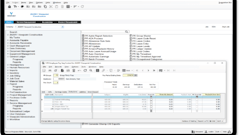
You know what they say: “Even a blind squirrel can find a nut once in a while.” Based on some expected tax changes coming down the line, you may be that squirrel.
I just received a review of pending tax changes that I have been told will become law for 2023 and 2024. And when they do, many contractors will have the opportunity to amend their 2023 tax returns and receive additional benefits that could reduce 2024 estimated tax payments.
The changes deal with:
- Bonus depreciation
- Section 179 write-off
- Interest expense limitations
- Independent contractor status.
Bonus Depreciation
The Tax Cuts and Jobs Act (TCJA) allowed bonus depreciation starting September 27, 2017, and before January 1, 2023, through 2022. After 2022, bonus depreciation was to phase out at 20% per year, meaning the 2023 bonus would only be 80% of qualified purchases, 60% for 2024 and so on through 2027. After 2027, you return to your normal tax depreciation, meaning that the tax benefits received because of equipment purchases are materially less than what you had compared to 100% bonus depreciation, which is a big difference regarding cash flow.
The proposed change is to reinstate 100% bonus depreciation through January 1, 2026, making it possible to use a 100% bonus for 2023, 2024 and 2025. Therefore, contractors that based their 2023 estimate payments figuring an 80% bonus, will find it will become a 100% bonus, which may create a refund on your 2023 tax return because you paid more than you had to.
If you were estimating your 2024 estimated tax liability using a 60% bonus, you can now revise that estimate and base it on a 100% bonus, which means newfound cash in 2023 and a tax saving in 2024.
Section 179
Section 179 is amended to increase the limit on depreciable business assets expensing. For property placed in service after December 31, 2023, taxpayers can expense up to $1.29 million, reduced by the amount of the cost of the qualifying property more than $3.22 million, adjusted for inflation. In short, you can expense more in 2023 because they increased the limit.
Business Interest Expense
Regarding the business interest limitation, the proposal extends the use of earnings before interest, tax, depreciation and amortization to calculate the deduction for business interest. This applied for tax years after December 31, 2023, and will run through 2025.
Using my blind squirrel example, these tax benefits are generated for taxpayers who made estimated tax payments for 2023 and had enough taxable income to produce a new source of unanticipated cash. The same goes for making estimated tax payments for 2024, which can be reduced since your estimated tax deductions are higher. Taxpayers who do not get immediate tax benefits could generate either a carry-back or carry-forward benefit. Said another way, you must have taxes to pay to get the benefit.
Independent Contractor Status
If you have independent contractors working for your company, things are about to get more complicated because the IRS has tightened its definition of an independent contractor to the point that it will be tough to comply with. There are six factors to determine if a person is an independent contractor:
- Any opportunity for profit or loss a worker might have.
- A financial stake or resources the worker has invested in the work.
- The degree of permanence of the work relationship.
- The degree of control an employer has over the person’s work.
- Work that is essential to the employers’ business.
- A factor regarding the worker’s skill and initiative.
The IRS is looking for payroll withholding and payroll taxes that they receive from employees and employers. They are also looking at base pay, overtime requirements and benefits that may be due to an employee. Since contractors are not “employees,” they are not included when calculating worker’s compensation and liability insurance profiles used by insurance companies to calculate a premium. Consequently, contractors should provide an insurance certificate to the employer to avoid insurance gaps should an incident occur. After reviewing this issue, I can only say that I see a ton of exposure if you guess wrong.
We all know that contractors need “subs” to work on their projects, but if you are issuing 1099s at the end of the year, review what you are doing to avoid potential tax and penalty expenditures.
One More Thing
This last issue relates to the independent contractor issue and shareholders using the LLC format. If you receive distributions from an LLC, you must document why you do not have to pay payroll taxes on those distributions. If you work in the LLC to generate the profits that are being distributed, the distribution may not be investment income where zero payroll tax is required. If not considered investment income because you are only a limited partner in name only, the self-employment tax rules apply, and you must pay payroll taxes on the earnings.
Keep these thoughts in mind and make sure to check if there are “nuts” out there that you can deposit into your checking account. If you participated in major acquisitions in 2023 and have plans to do so in 2024, these changes could smooth out your cash position in 2024 and beyond.






























